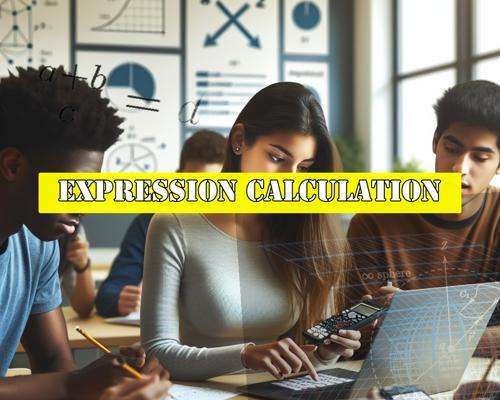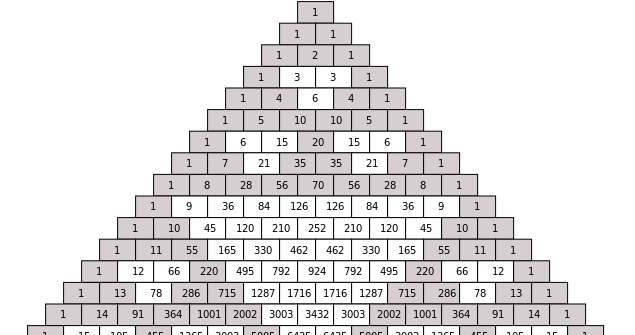Expand Expression
Instructions: Use this Algebra calculator to expand an expression you provide, showing all the relevant steps. Please type in the expression you want to expand in the box below.
Expanding Expressions
This expand calculator will allow you expand an expression you provide, showing all the relevant steps. It can be a relatively simple expression like 2(x-1)^2, or it could be something more complex involving some compounded functions.
Once a valid expression is provided, then all that is left to do is to click "Calculate" in order to get the results, with all the relevant steps shown, showing how to arrive to the final answer.
Fractions algebra involves fraction conversion such as the use of common denominator, and the use of basic arithmetic rules. All in all, the process of the calculation can be laborious, although it can be done systematically, without much of a problem.

What does it mean to expand an expression?
To large extent, expanding an expression is kind of the opposite to simplifying an expression, but there is more to it, as the terms are tangled with each other.
For example, if you have the expression:
\[\displaystyle 2(x+1)-3 \]how would you expand it? By the meaning of the word, you could think you are trying to make the expression as big as possible, as "expanded" as possible. Under that light, you could say, we have the following expansion:
\[\displaystyle 2(x+1)-3 = 2x + 2 - 3 \]I don't know about you, but to me that feels a bit incomplete: would you want to leave the part "2 - 3" without processing? I would not, I would instead do
\[\displaystyle 2(x+1)-3 = 2x + 2 - 3 = 2x - 1\]So as you can see, there is a bit of simplification in this expansion process. So, it is not totally true that expanding is the opposite to simplifying. Expanding an expression consists of following PEMDAS rules to distribute terms, and then it involves a simplification of expressions part.
How do I expand an expression or an equation?
The expansion process, as we mentioned before, it is not just about making the term "as expanded as possible", but it is a mix of distributing and simplifying terms. But also there is a level of granularity you need to decide on, because distributions are not the only possible expansions to make.
For example, we can think of operations with radical expressions. Suppose that you are dealing with some simple expression like
\[\displaystyle \sqrt{xy}\]How would you expand that? Would you do this expansion?
\[\displaystyle \sqrt{xy} = \sqrt{x} \sqrt{y}\]Though that is a valid operation, some people would question its sense saying "why would you expand an expression that is already perfectly simplified". But there are some valid uses, for example, you may have a \(\sqrt y\) in the denominator, in which case you would have
\[\displaystyle \frac{\sqrt{xy}}{\sqrt{y}} = \displaystyle \frac{\sqrt{x} \sqrt{y}}{\sqrt{y}} = \sqrt{x}\]which also leads to the following question, which one is the "correct" expansion: \(\displaystyle \frac{\sqrt{xy}}{\sqrt{y}} = \displaystyle \frac{\sqrt{x} \sqrt{y}}{\sqrt{y}}\) or \(\displaystyle \frac{\sqrt{xy}}{\sqrt{y}} = \sqrt{x}\)?
Hope these points have helped you realize that there is not one unique way of expanding an expression. You should follow the following steps when needing to expand a term:
- Step 1: Identify the granularity of your expanding process: will you expand by distributing only, or will you expand terms like radicals using the rules of radicals, trigonometric expression (using trigonometric identities), exponential expressions (using the power rule), logarithmic expressions, etc.
- Step 2: Once you have decided on the granularity of the expression expansion you will commit to, you need to follow the corresponding PEMDAS rules that will govern such expansion, paying attention to the priority rules established by PEMDAS
- Step 3: Once your expression is expanded according the previous steps, you need to group like terms if needed, conducting a "simplification of the expansion".
- Step 4: Ready. You now have found the expanded expression?
Most of the computer algebra systems around (CAS) such as Mathematica, Sage, Octave, etc use different criteria when expanding and simplifying, leading to different final outcomes often times.
How do you expand exponentials?
Like we mention before, it all depends on the granularity of the expansion: this is, what type of expression are you wanting to expand, only distribution of multiplications and additions, or will you include other types.
For the case of exponentials, for example, it follows directly the power rule which state that
\[\displaystyle a^{x+y}= \displaystyle a^x a^y \]which gives you right there the expansion you are looking for.

How do you expand a polynomial?
Polynomials are typically expanded by using the distribution property. For example, you may want to expand this product of polynomials:
\[\displaystyle 2x^2(x^3+1)-4 \]By applying the distributive property, we find that
\[\displaystyle 2x^2(x^3+1)-4 = 2x^2 \cdot x^3 + 2x^2 - 4 = 2x^{2+3} + 2x^2 - 4 = 2x^5 + 2x^2 - 4 \]As you can see, expanding polynomials involves a relatively simple use of the distributivity rule. Things can definitely get more complex when mixing different types of expressions, but this expand expression calculator will deal not only with polynomials but also with the combination of different types of expression, with specific rules to be expanded.
Other common type of expansion for polynomials is based on the binomial expansion theorem, which tells you how to expand a power like \((x+y)^n\). As you can see, the plot thickens, and things can get complex indeed.
Why would you want to expand an expression?
There are many reasons, including to cancel out terms, but not only that, as we can often times expand expression to understand its structure and properties a little better.
The question of how to simplify an expression and how to expand an expression could appear at first light as opposite, but we have seen that they actually go hand to hand, and they intertwine.

Example of an expression in expanded form
Put the following expression in expanded form \(\frac{x^2}{y} ( \ln(xy)) \)
Solution: Let's assume that we have decided to expand all types of expressions, including logarithmic equations. In this case the expression we are dealing with has a fraction term that cannot be expanded in any meaningful way, but the logarithmic part can be expanded as \(\ln(xy) = \ln(x)+\ln(y)\). So then we get
\[\frac{x^2}{y} ( \ln(xy)) = \frac{x^2}{y} (\ln(x)+\ln(y)) = \frac{x^2}{y} \ln(x)+ \frac{x^2}{y} \ln(y) \] \[ = \frac{x^2 \ln x}{y}+ \frac{x^2 \ln y}{y} \]which leads to the expression in expanded form.
Other useful Algebra calculators
Simplifying and expanding expressions are two complementary operations rather than opposite operations. You need them both to conduct Algebra at an efficient level. For example, you may want to use an equation simplifier to simplify equation, which a priori implies making the equations easier to solve, a practical ability to have.
Indeed, solving equations is one of the most crucial abilities in Algebra, and you need to have complete fluency of the process of expanding and simplifying, as well as reducing and augmenting. All of those abilities will come in handy.
Expanding can be crucial in other context, for example, when using the binomial theorem, so to break down which components a term has to, for example, match them one by one with another expression .




